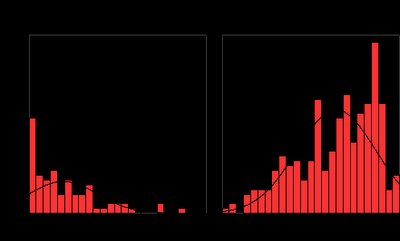There is a considerable amount we, as IP Managers or Attorney's, can learn about patent process from the Early Adopter internet geeks in this world.
Last month I read about Social Networking still being an Early Adopter technology. Upon reflection, I think there is a valuable patent process based idea we can take away from this.
One of the larger (useful) social networking information sites is digg.com – a social networking site that combines social bookmarking, blogging and syndication – but all in a democratic environment. Users can submit stories and “digg” other users stories. Through a real-time user based ranking system, if the story gathers enough “digg’s”, depending on the algorithm that runs in the background, the best stories make it to the front page. There are specific categories (Technology, Science, World & Business, Sports, Entertainment, Gaming, and Video’s), each with sub-categories. Listed in the top 100 most visited sites on the internet by Alexa, it claims over 500,000 registered users and 3000+ submitted stories per day. To get to the front page a story typically needs 350-600 “diggs” to get to the front page, the range dependant on the time of the day and week a story is posted.
Now you may be wondering, how does this relate to an IP process? In short: Idea screening and ranking. Many companies have ranking committees, all filtering out the good ideas from the bad. Often several different departments are included, perhaps IP counsel, and an IP Manager. For mid to large firms that have a large amount of innovations submitted for patenting, the ranking process that is controlled by the few on the ranking committee, which means these few have to sort and filter a large number of ideas. But is this process skewed?. Recently Bill Mead of Basic IP wrote an article entitled “The 6 Stages of Inventors” which sums up the state of most current processes. Mead notes several social norm based problems with this ranking process. He writes “Many patent committees will not select patent applications based only on merit. A variety of other factors can crowd merit off the table. For example, "This is this inventor's first disclosure, we need to file on it to encourage them." Or, "We are not getting enough disclosures in this area of technology, we need to file on this disclosure because we need more coverage here." Or, my personal favorite non-merit-based reason "Might be useful." When taken with the "This person has more than his/her fair share of patent applications this meeting" norm that inventor mentors have inflicted on them, these seemingly innocuous norms can become an oppression to your company's best and brightest inventors, your inventor mentors.”
In considering the patent idea ranking, both from an employee effort perspective and a idea merit perspective, there is room for improvement. I suggest a way to move to a more democratic and meritcratic process may be to insert the social networking backbone of sites like digg.com into the searching or idea ranking process. In doing so the structure of such a system could have the following structure and benefits:
- Ideas get 1 vote per [qualified] employee (anyone is free to rank, but that may cause more issues than having a larger set of qualified rankers). The goal here is to get people involved and build innovation (and ranking of what is good/bad idea) into the culture.
- Ideas are submitted by anyone, but all inventors (theoretically the entire R&D department and beyond) are encouraged to use this innovation database as a pool of ideas to build on, or see what others are working on. The goal here is to expand the idea database into a true working innovation/brainstorming database. This will have an end result as to promote innovation within development as a culture, and give opportunities for anyone to build on ideas.
- Ideas are commented on or added to by anyone. The goal is to spread the ownership of the idea to more people across the organization, which would in build a cycle of buy-in of the new ranking system.
- Inventors get relatively instant feedback as to if the idea is valuable, or needs work. The goal is to speed up and make more valuable the feedback cycle, which will result in increased motivation to file ideas, and better ideas submitted over the long term.
Over time these characteristics would develop an idea raking process that is used in two distinct employee groups - the ranking committee and the inventors.
- Ranking Committee: the ranking committee could meet, already having a rough outline of the ranked ideas to move forward. While most employees don’t have the perspective of the ranking committee – a combination of legal, business and technology reasons to pick the ideas they do – it will give a base to start from (thereby reducing work), ultimately fostering a process where ideas to be ranked mostly on merit. On the flip side, having everyone see what was highly ranked, and what eventually was patented gives feedback and training to everyone at a more global level, ‘what was actually important, and why.’
- Inventors: The employees can use the idea/ranking database as a incubation center in the product development process. Integrating this tool into the actual R&D process automatically begins to ingrain the culture of IP into the employees. Development is done and without any effort, the ideas are already populated into a database for ranking and filing.
I could see this being more valuable the larger the organization, which makes sense because the smaller organizations are more nimble and ranking should be easier to begin with. It could also be very valuable in organizations that have R&D spread across multiple locations. As I noted earlier the best residual effect of this improved process would be the fostering of collaboration and inserting IP right into the fabric of the development culture.
Any comments on if / how this can workout?

